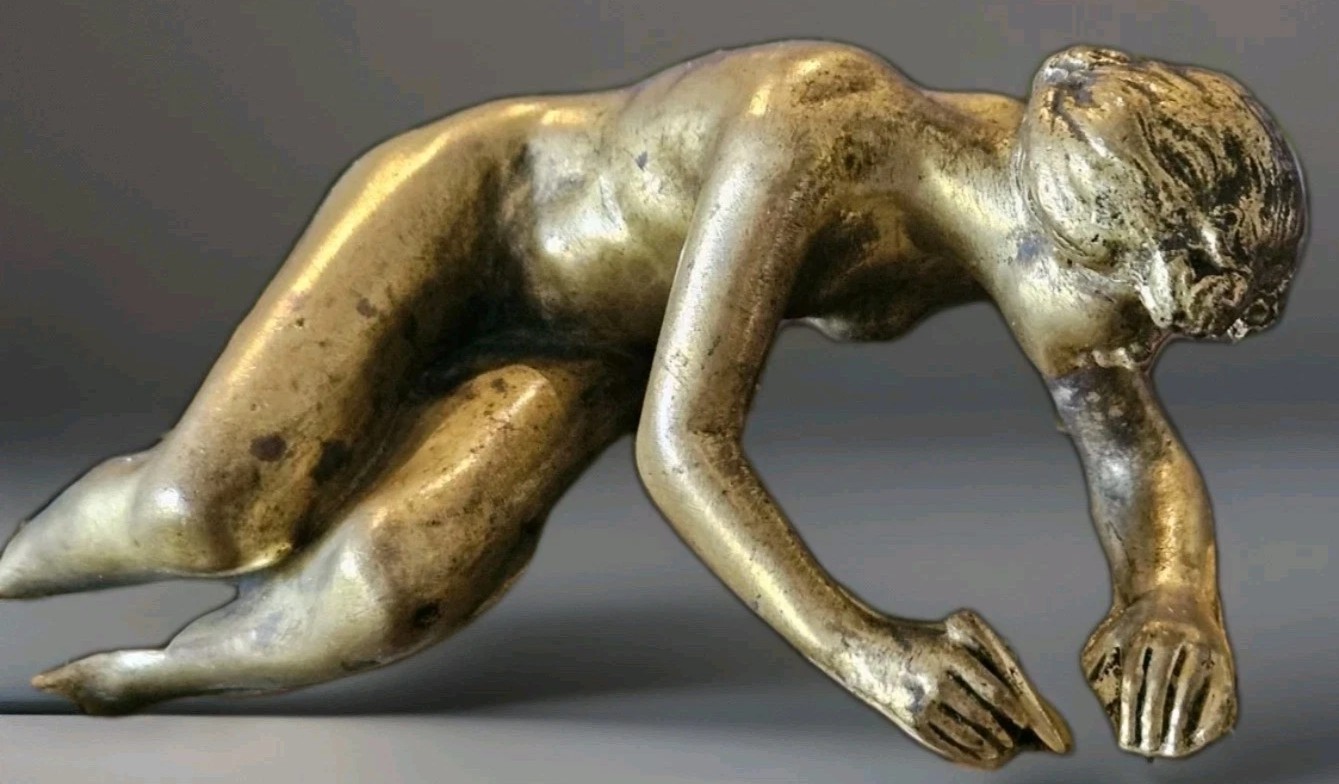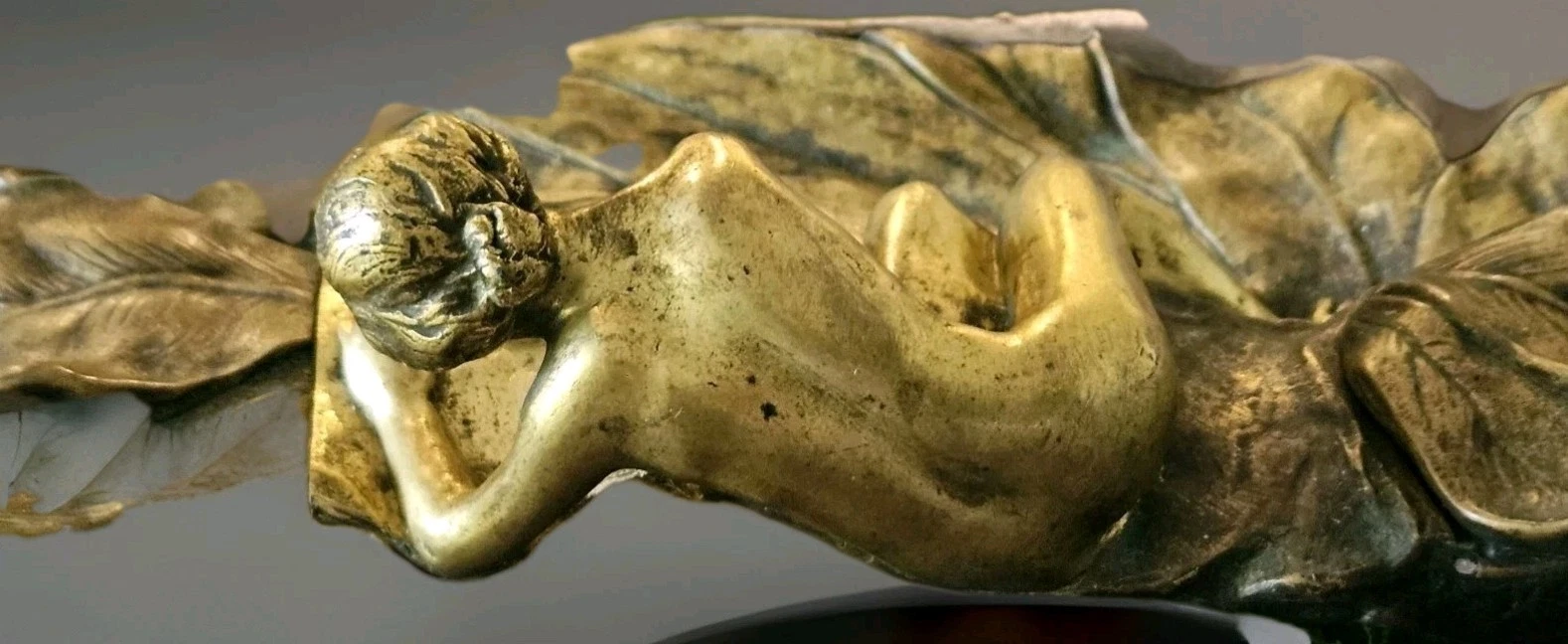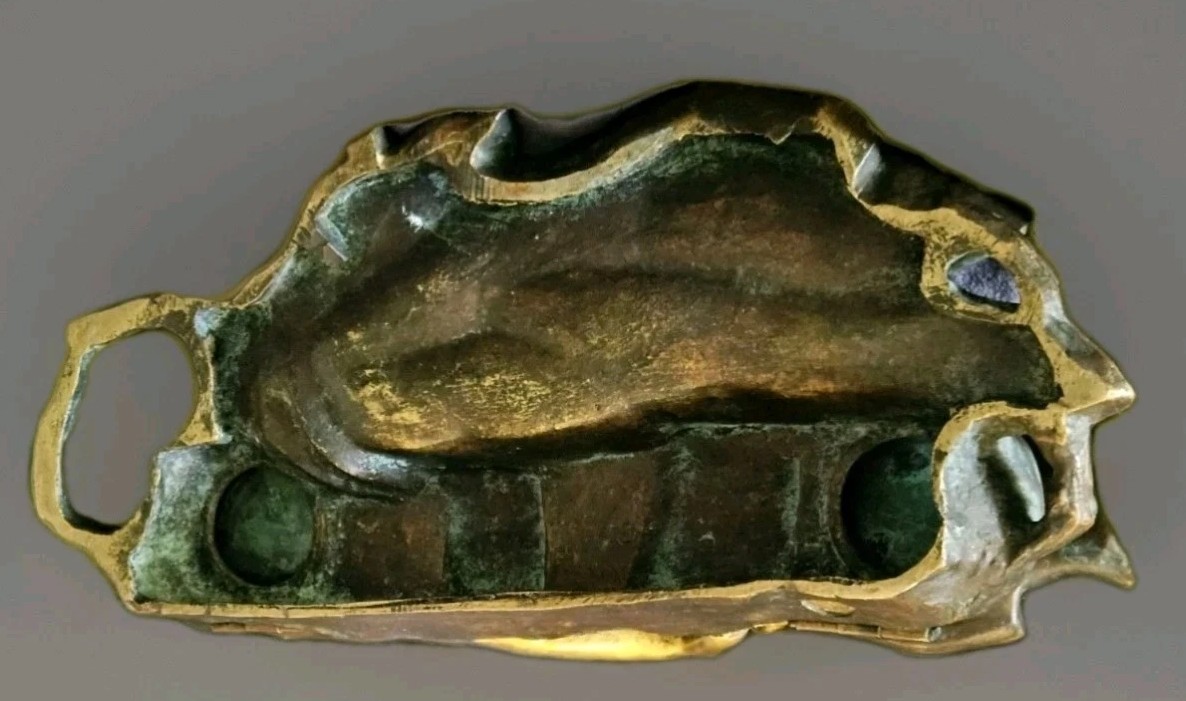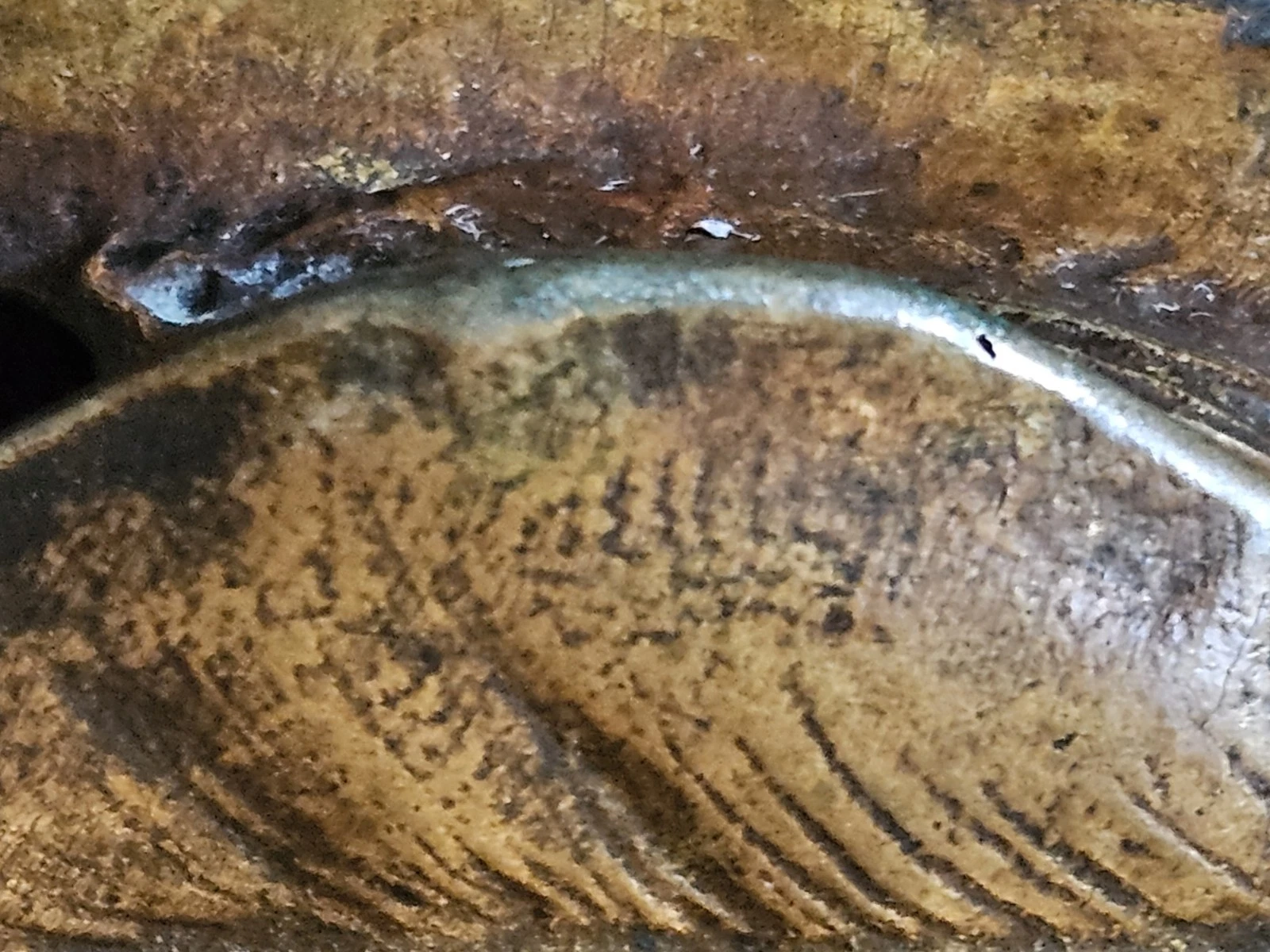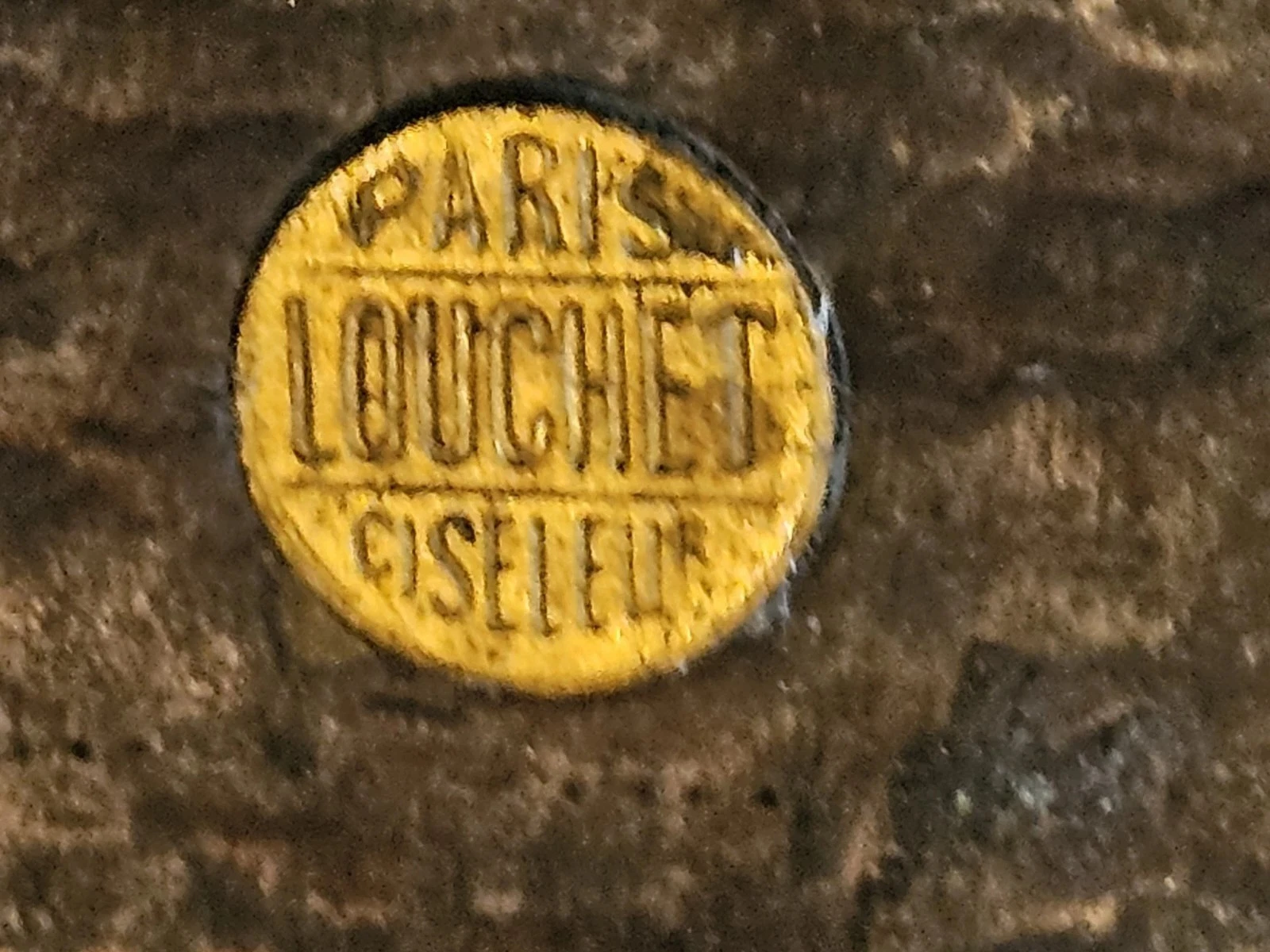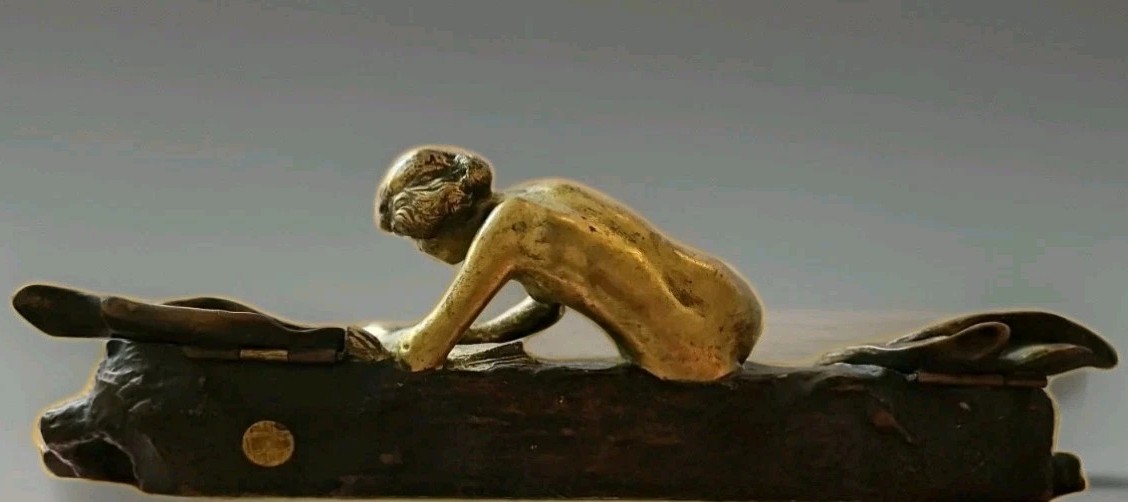
Nude Woman Writing
| Categories | Art Nouveau |
| Type | Woman / Lady / Female |
| Material | Bronze |
| Markings | See Narrative |
| Manufacturer | Charles Louchet |
| Origin | France |
| Date or Era | circa 1900 |
| Measuring | 10” x 5” x 3” high |
This is an Art Nouveau double inkstand created by Charles Louchet in Paris around 1900.
- The Central Figure: The inkstand features a bronze figure of a nude woman. Her hair is tied up in a bun at the back of her head. She is positioned in a dynamic pose, leaning forward and resting on her side. With a quill pen in her right hand and a piece of paper in front of her, she is focused on writing. The figure’s graceful and naturalistic pose is a hallmark of the Art Nouveau style.
- The Base and Inkwells: The bronze base is rectangular with organic, sinuous curves that are typical of the Art Nouveau period. It is decorated with stylized vines and leaves. On either side of the figure are two circular reservoirs for ink, where the original glass inserts are now missing. The reservoirs are covered by leaf-shaped, hinged lids. The curve of the leaves in the front serve as a place to rest a pen.
- Material and Marks: The inkstand is made of patinated bronze and authenticated by the signature “Ch. Louchet” and the Ciseleur Foundry mark, a stamp that signifies the high quality of the casting and finishing work performed in Louchet’s workshop.
Charles Louchet (1854-1936)
Charles Louchet was a French sculptor, chaser (ciseleur), and foundry owner active during the late 19th and early 20th centuries. His work is a prime example of the Art Nouveau movement, which embraced organic forms, fluid lines, and the integration of fine art into functional objects. Louchet was known for creating both standalone sculptures and decorative arts like lamps and inkstands, often featuring elegant female figures and naturalistic motifs. While he was a prolific artist, he’s also recognized for his connection to the foundry that bore his name.
Ciseleur Foundry
The Ciseleur Foundry was a Parisian workshop where Charles Louchet produced his bronze works. The word ciseleur is French for “chaser” or “chiseler,” referring to the highly skilled craftsman who finishes a bronze cast. The chaser uses various tools to refine the surface of the bronze, correct any imperfections from the casting process, and add fine details, a crucial step in creating a high-quality finished sculpture. The presence of the “Louchet Ciseleur” mark on a piece indicates that it was not only designed by Louchet but also finished in his workshop, guaranteeing a high standard of craftsmanship. This practice of an artist also owning the foundry was common among some prominent sculptors of the era, allowing them complete creative control from the initial design to the final, finished product.
Sold for $231 in July 2025
Content disclaimer. The information posted is the owner’s best knowledge and may not have been vetted by the SOIC. We welcome comments, corrections, and additions, working to make our website information comprehensive and accurate.
Join the Society of Inkwell Collectors (SOIC) – it’s free!
Founded in 1981 as a non-profit organization,
we are documenting inkwells (and accessories).
We’re here to help and inform!


